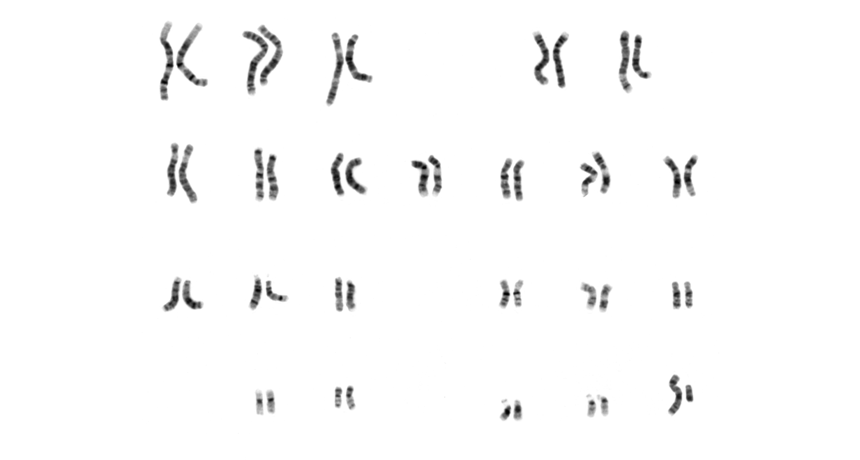cell The smallest structural and functional unit of an organism. Typically too small to see with the unaided eye, it consists of a watery fluid surrounded by a membrane or wall. Depending on their size, animals are made of anywhere from thousands to trillions of cells. Most organisms, such as yeasts, molds, bacteria and some algae, are composed of only one cell.
chromosome A single threadlike piece of coiled DNA found in a cell’s nucleus. A chromosome is generally X-shaped in animals and plants. Some segments of DNA in a chromosome are genes. Other segments of DNA in a chromosome are landing pads for proteins. The function of other segments of DNA in chromosomes is still not fully understood by scientists.
DNA (short for deoxyribonucleic acid) A long, double-stranded and spiral-shaped molecule inside most living cells that carries genetic instructions. It is built on a backbone of phosphorus, oxygen, and carbon atoms. In all living things, from plants and animals to microbes, these instructions tell cells which molecules to make.
gene (adj. genetic) A segment of DNA that codes, or holds instructions, for a cell’s production of a protein. Offspring inherit genes from their parents. Genes influence how an organism looks and behaves.
histone A type of protein found in the nucleus of cells. Strands of DNA coil around these proteins to fit inside of cells. Each chromosome within a cell has its own strand of DNA. So with 23 pairs of human chromosomes, every human cell should host 46 strands of DNA — each wrapped around eight histones. This tight coiling helps the body to pack its long DNA molecules into very tiny spaces.
molecule An electrically neutral group of atoms that represents the smallest possible amount of a chemical compound. Molecules can be made of single types of atoms or of different types. For example, the oxygen in the air is made of two oxygen atoms (O2), but water is made of two hydrogen atoms and one oxygen atom (H2O).
protein A compound made from one or more long chains of amino acids. Proteins are an essential part of all living organisms. They form the basis of living cells, muscle and tissues; they also do the work inside of cells. Among the better-known, stand-alone proteins are the hemoglobin (in blood) and the antibodies (also in blood) that attempt to fight infections. Medicines frequently work by latching onto proteins.
Y chromosome A portion of an animal’s genetic inheritance that appears on a sex chromosome known as “Y”. Males will usually have a Y- and an X-chromosome. Females ordinarily have no Y-chromosomes.

